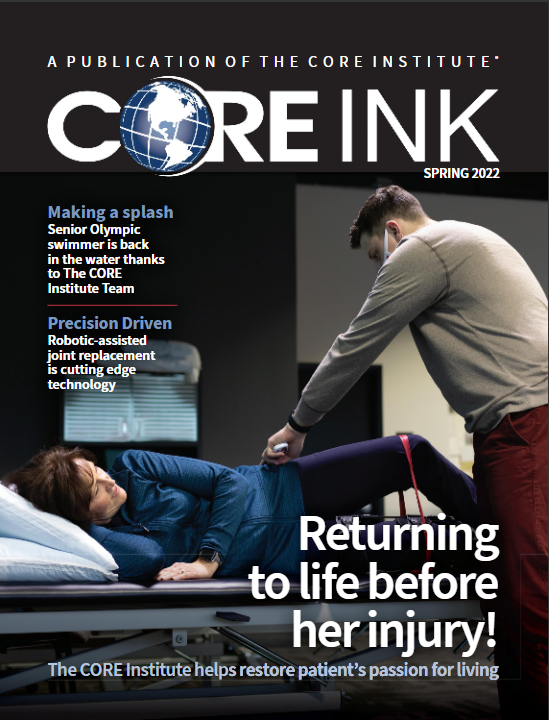New Table, Fewer Complications
Post-free hip arthroscopy comes to The CORE Institute
By Julie Maurer
A surgeon at The CORE Institute is the first in Arizona to incorporate new technology during hip arthroscopy that can significantly reduce the risk of complications for patients.
Dr. Michael Rose, an orthopedic sports medicine surgeon, practiced in Denver, Colorado while the post-free hip distraction table was first introduced, and brought his experience to The CORE Institute.
Hip arthroscopy allows surgeons to view and treat treat hip problems with tiny incisions. Traditionally, surgery on the hip joint would require a large incision and would require substantial force and effort to make the joint accessible. According to Dr. Rose, with traditional tables, between 60 and 100 pounds of traction force is required to visualize the hip joint.”
“It puts a lot of unwanted force on the groin region that could otherwise be avoidable,” Dr. Rose said of the typical procedure, which uses a large post between the legs to keep the body in position.
Eliminating complications
This traction placed on the groin area can lead to complications after surgery, including pain, numbness in the groin, and even sexual dysfunction.
“It would also occasionally make surgery more difficult because we would have to work around the post,” Dr. Rose said.
The new post-free table utilizes a special leg holder, a high friction pad, and gravity to open up space in the hip for surgery.
Dr. Rose has been using this new procedure style for six months now, and patients are reporting less pain after surgery.
“Another benefit of the new table is that it provides a slightly less surgical time, so we see less inflammation and swelling in post-op patients,” Dr. Rose said.
Added benefits
He noted there are some other advantages of this table that have surgeons very excited.
“The foot has to be held tight during surgery. The boots on the traditional tables were outdated, and people would occasionally experience some discomfort in their feet and ankles after surgery,” Dr. Rose said. “The new boots are better designed to evenly spread out the pressure — an unintended benefit of this table.”
He believes that patients who might have been on the fence about getting a hip arthroscopy before might be more willing now that potential complications are eliminated.
“Most surgeons believe this will be the standard of care going forward because this is what’s best for the patient,” Dr. Rose said.
SUBSCRIBE TO CORE INK NEWSLETTER
Sign up to receive stories and information from The CORE Institute, including expertise from our providers and news about the latest technology advancements helping our communities.

